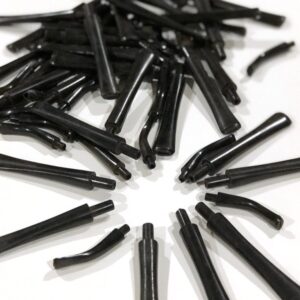
Pipe mouthpieces’ Materials
Though the bit may not seem the most important part of a pipe, it is the only part one holds in the mouth. Therefore, a proper fit is of major importance. Even the smallest defect (too thin, thick, narrow or wide) may result in unpleasant smoking. Mouthpieces come in many materials, of which vulcanite and acrylic are the two most frequently used.
Vulcanite, Ebonite:
Vulcanite is a dark-colored variety of Indian rubber which has been subjected to vulcanization. Molded vulcanite mouthpieces have the advantage that they are easy to fit and therefore used on all industrial, machine made pipes. The disadvantage is that vulcanite discolors as a result of the oxidation of the rubber and that this material is not as strong as acrylic and can be bitten through.
Acrylic:
Acrylic (hard plastic) mouthpieces have become very popular over the last years. This material, that is commonly used for mass produced pipes, does not discolor and is relatively strong. Acrylic comes in a full spectrum of colors, ranging from clear to red, green, blue, metallic swirled patterns and deep black.
Amber:
Amber, a vulcanized resin, has been used as pipe bit material since the 19th century. It is originally found on the shores of the Baltic Sea. Because of its wonderful colors (ranging from white to yellow to deep red), it is often used for prestigious high grade briars and meerschaum pipes. Amber has a fine structure and as a result, breaks quite easily.
